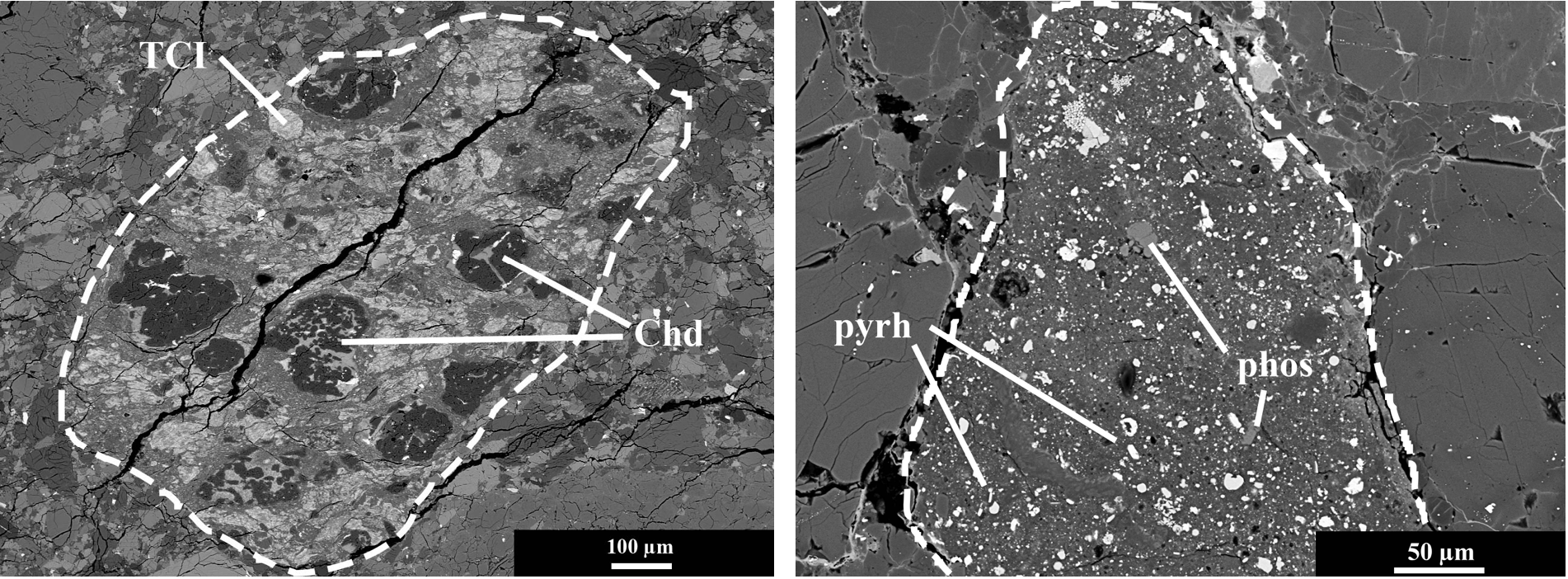Research areas: Planetology, Mineralogy, Cosmochemistry
Within the first funding period, we identified certain volatile-rich meteoritic components, called clasts, within chondritic and achondritic breccias that differ from all meteoritic materials previously identified so far in studies of individual meteorites. Thermometric analyses show that these clasts were all altered at low temperatures around 65±25 °C, similar to CI and CM meteorites. However, regarding the sulfur, oxygen, and hydrogen isotopes of the CI-like clasts, some of these materials seem to be derived from unique primitive (C1) parent bodies that existed in the early solar system. Also, preliminary results based on the clasts’ Mn-Cr chronology suggest that carbonate formation on some of these C1 parent bodies may have occurred at least 15 Ma after that on the CI (Ivuna-type) parent body(ies), further indicating that the identified CI-like clasts did not originate from the same parent body(ies) as CI meteorites but instead originated from different C1 parent bodies. None- theless, to determine the role of these clasts in the early solar system—namely to determine whether they represent building blocks of terrestrial planets or components of late accretionary processes—all these findings have to be confirmed and supplemented by comprehensive isotopic data, such as Cr, Ti, and N isotopes, as well as by the minor- and trace-element bulk compositions (including noble gases) of these clast materials. Thus, in the new funding period we will obtain the isotopic signatures and bulk chemistry of the clasts we have discovered so far, as well as of new unique types of meteorites. These new measurements will also include comprehensive C isotope analyses of C-rich minerals (notably of graphite) within fragments and rocks of chon- dritic origin (enstatite chondrites, ordinary chondrites) and of achondritic origin. Further, we will analyze N isotopes and noble gases abundances, and will conduct isotope and chemical studies on individual phos- phates (chlorine isotopes, halogens) and additional carbonates (Mn-Cr system). The proposed project requires isotope determination at SIMS facilities in Stockholm and Heidelberg, and at the NanoSIMS facility in Mainz (MPIC), and additional bulk chemical analyses will be obtained by LA-ICP-MS and MC-ICP-MS in cooperation with members of the TRR 170 and external laboratories. Overall, all of the obtained data will be combined to help us evaluate whether these clasts represent planet-building materials or were incorporated into their host breccias later, as components of late accretionary processes.

Figure: (a) Typical CM-like clast in the howardite EET 87513, in which abundant chondrules are surrounded by accretionary dust rims and patches of tochilinite-cronstedtite intergrowths (TCIs). (b) Typical C1 clast in the polymict ureilite DaG 164, which has a fine-grained, phyllosilicate-rich matrix and embedded magnetite (most white particles), lath-shaped pyrrhotite (pyrh), and phosphates (phos).

